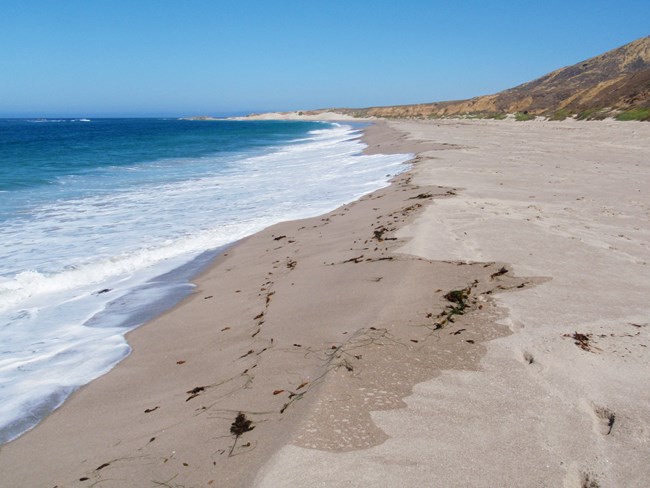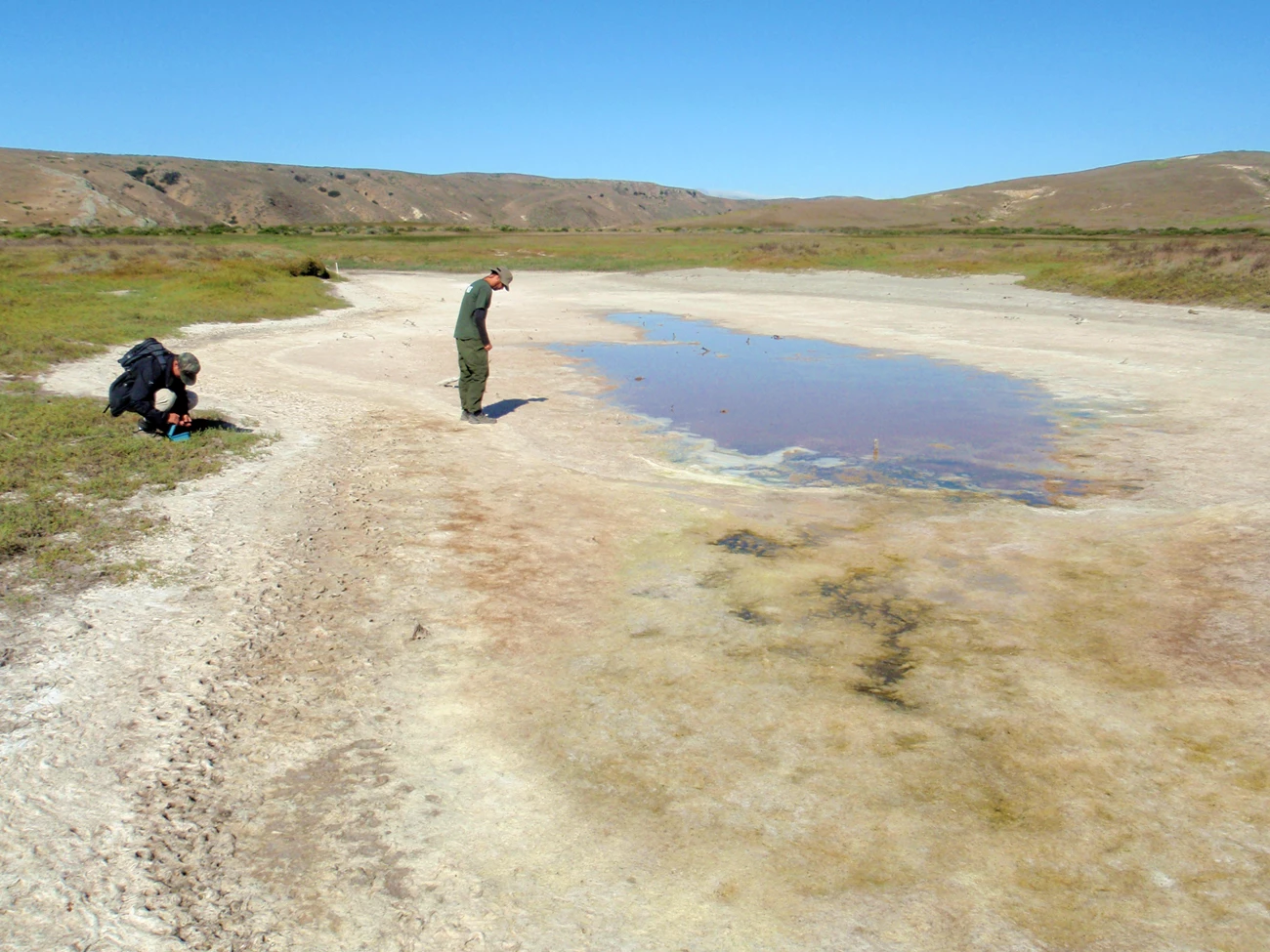
NPS
Why We Care
Sandy beaches are a major component of the intertidal region of the northern Channel Islands. On Santa Rosa Island, sandy beaches make up approximately 30 km of shoreline, encompassing a wide variety of exposures and beach types. Approximately 20 percent of the shoreline of the California Channel Islands is sandy beach, in comparison to 80 percent of the shoreline of the southern California mainland coast.
Though often overlooked, sandy beach communities offer a dynamic arena for the interaction of marine and terrestrial ecosystems. Sandy beaches harbor high densities of detritus, infauna, and macro-invertebrates that supply food and habitat for both marine and terrestrial organisms. Many bird species utilize sand beaches as nesting and foraging habitat. Terrestrial mammals and birds prey and scavenge on sand beach organisms.
All these organisms in turn play a vital role in the functioning ecosystem we classify as sandy beaches. Sand beaches are utilized by a wide variety of species for feeding, resting, and breeding. Sea and shorebirds feed on beach macrofauna, snowy plovers breed on beaches, pinnipeds haul out to rest and molt on island beaches, and people enjoy the solitude and sweeping vistas of wilderness beaches. Coastal lagoons are a rare resource in southern California yet they play an important role for spawning fish and breeding waterfowl.
How We Monitor
Park researchers use a variety of sampling techniques to monitor the population dynamics of beach and lagoon organisms.
- Beaches are sampled annually in late summer.
- Macrophyte debris, primarily algal wrack and a major source of energy for beach communities, is measured on point contact transects.
- Abundance and distribution of sand crabs, Emerita analoga and Blepharipoda occidentalis, the isopod Excirolana chiltoni, beachhoppers, Megalorchestia spp., and purple olive snails, Olivella biplicata, are measured.
- Size frequency data are also collected for sand crabs, pismo clams, and purple olive snails.
- The abundance and distribution of birds are estimated by an annual census.

NPS
Last updated: December 3, 2018
